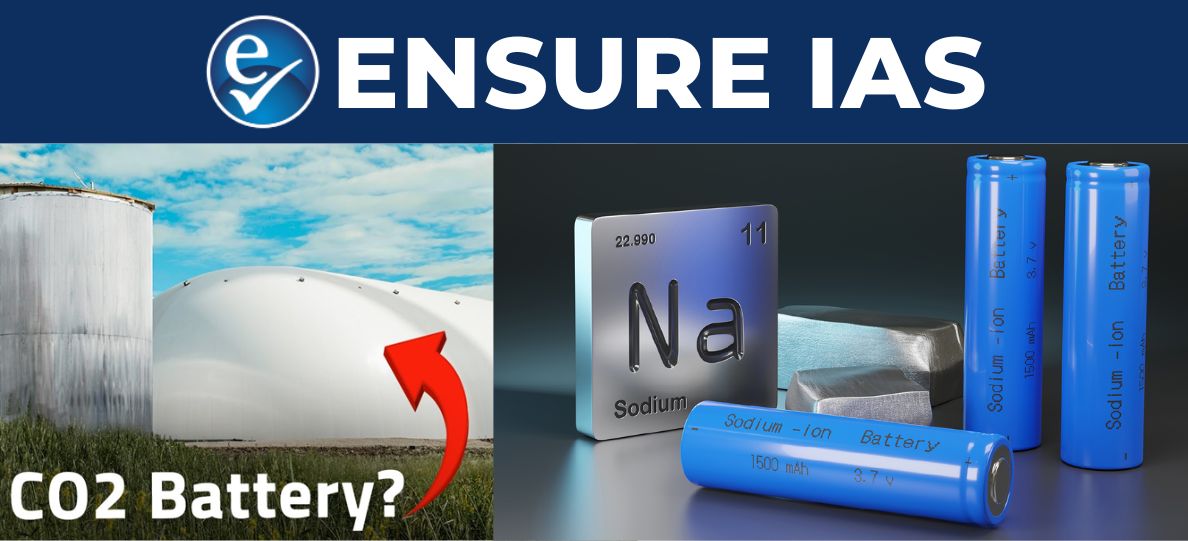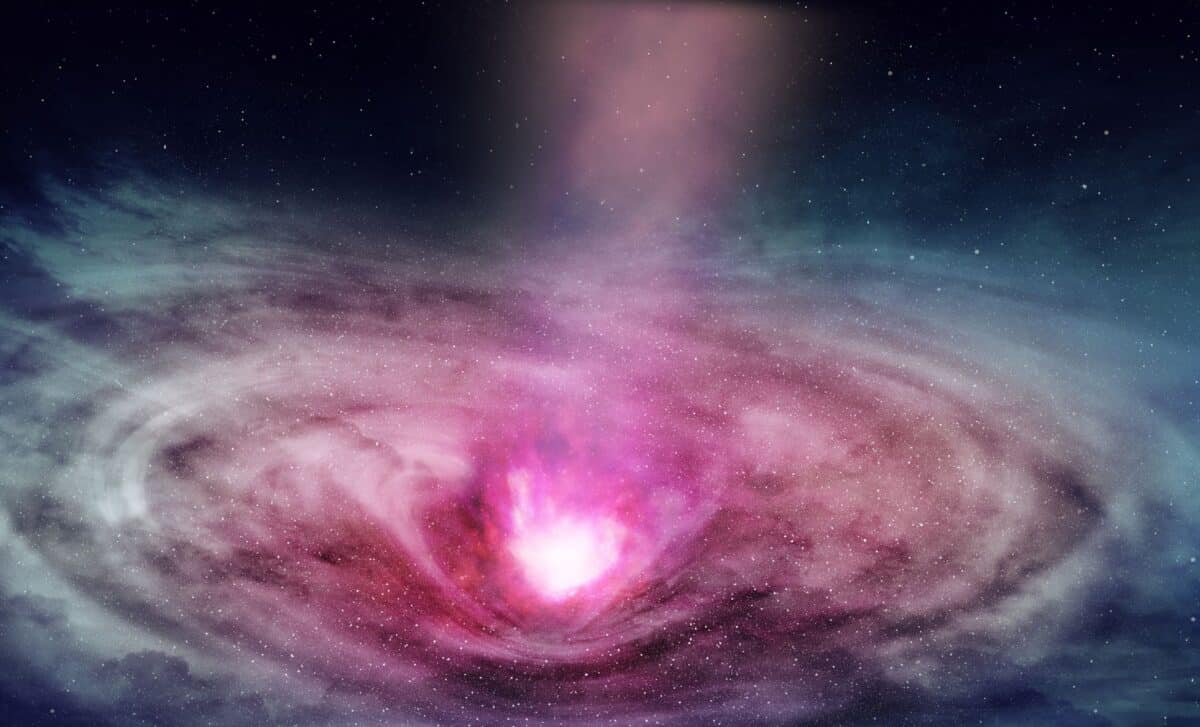- Courses
- GS Full Course 1 Year
- GS Full Course 2 Year
- GS Full Course 3 Year
- GS Full Course Till Selection
- Online Program
- GS Recorded Course
- NCERT (Recorded 500+ Hours)
- Polity Recorded Course
- Geography Recorded Course
- Economy Recorded Course
- AMAC Recorded Course
- Modern India, Post Independence & World History
- Environment Recoded Course
- Governance Recoded Course
- Science & Tech. Recoded Course
- International Relations and Internal Security Recorded Course
- Disaster Management Module Course
- Ethics Recoded Course
- Essay Recoded Course
- Current Affairs Recoded Course
- CSAT
- 5 LAYERED ARJUNA Mentorship
- Public Administration Optional
- ABOUT US
- OUR TOPPERS
- TEST SERIES
- FREE STUDY MATERIAL
- VIDEOS
- CONTACT US
NTPC Introduced 1st CO2 (Carbon Dioxide) Battery at Kudgi, Karnataka
NTPC Introduced 1st CO2 (Carbon Dioxide) Battery at Kudgi, Karnataka

- In February 2025, NTPC Limited introduced its CO2 Battery energy storage technology at its Kudgi station in Karnataka.
- This is a major advancement in Long Duration Energy Storage (LDES), which will help store energy for extended periods.
- The project was developed in collaboration with Triveni Turbine Ltd and Energy Dome, a company from Italy.
- The CO2 Battery has the capacity to store 160 MWh (megawatt hours) of energy and is part of NTPC's efforts to enhance renewable energy generation and contribute to India's clean energy goals.
How the CO2 Battery Works
- Charging Phase: When there is extra energy (during times of low demand or when renewable sources like solar and wind are producing more power than needed), the CO2 is compressed and liquefied, storing energy for later use.
- Discharging Phase: When electricity demand is high, the liquefied CO2 is turned back into gas, which drives a turbine to generate electricity, sending the stored energy back into the grid.
Technology: Closed Brayton Thermodynamic Cycle
- The CO2 Battery operates on a ‘Closed Brayton Thermodynamic Cycle’.
- This means that the system changes the state of CO2 (from vapor to liquid and back) to store and release electricity.
- Unlike traditional Battery Energy Storage Systems (BESS), which rely on chemical reactions, the CO2 Battery uses special machines called turbomachinery to perform this function.
- This system is more long-lasting and efficient with minimal wear and tear over time.
Other Energy Storage Systems:
1. Battery Energy Storage Systems (BESS):
- These are the most common energy storage solutions that store electrical energy chemically.
- Lithium-ion batteries are the most widely used BESS, although there are other types such as Sodium-ion batteries.
- They have high power density but degrade over time and require rare materials.
2. Thermal Energy Storage Systems (TESS):
- These systems store energy in the form of heat, typically using materials like molten salt or ice.
- They can be used for applications such as heating or cooling but are less flexible for electricity grid balancing than CO2 Batteries.
Comparison of Energy Storage Systems
|
Feature |
CO2 Battery |
Battery Energy Storage Systems (BESS) |
Thermal Energy Storage Systems (TESS) |
|
Energy Storage Type |
Long Duration Energy Storage (LDES) |
Short to Medium Duration Storage (hours) |
Thermal Energy (e.g., molten salt) |
|
Charging & Discharging Process |
Compress and liquefy CO2; Expanding to gas for turbine |
Electrochemical reactions (e.g., lithium-ion batteries) |
Heat stored and released via thermal processes |
|
Efficiency |
High, with minimal performance degradation |
Degrades over time |
Depends on the technology used |
|
Material Requirement |
No critical minerals (lithium, cobalt, etc.) |
Dependent on scarce minerals (e.g., lithium, cobalt) |
Depends on thermal storage material |
|
Sustainability |
Environmentally friendly, long lifespan (>25 years) |
Shorter lifespan, environmentally costly due to materials |
Eco-friendly but dependent on materials |
|
Cost Over Time |
Lower long-term costs due to long lifespan |
Higher replacement costs over time |
Relatively cost-effective depending on the application |
|
Grid Integration |
Ideal for balancing renewable energy supply with demand |
Good for peak load, but limited in long-term storage |
Suitable for specific use cases like heating or cooling needs |
Key Benefits of the CO2 Battery
- The CO2 Battery can store energy for long periods, from hours to days or even weeks, which helps ensure a steady and reliable energy supply, especially when renewable sources like solar or wind are not producing power.
- The system does not rely on rare materials like lithium or cobalt, making it a more sustainable and eco-friendly solution.
- The long operational life of more than 25 years ensures it remains cost-effective over time with minimal maintenance and low performance degradation.
- By storing excess energy when it is available and releasing it during high demand, the CO2 Battery helps in maintaining the stability and reliability of the power grid, especially in renewable-rich areas.
- The CO2 Battery technology aligns with the ‘Make in India’ and ‘Atmanirbhar Bharat’ initiatives, encouraging the local manufacturing of clean energy technologies.
- It helps reduce dependence on imported technologies, boosting India’s energy security and self-reliance.
Conclusion:
The launch of the CO2 Battery at NTPC Kudgi is a significant step toward India’s transition to clean and reliable energy. The CO2 Battery offers a sustainable, cost-effective, and long-lasting solution for energy storage, making it an ideal technology for balancing intermittent renewable energy with grid demand.
|
Also Read |
|
| Public Administration Optional | |
| Question Answer Practice For UPSC | |




